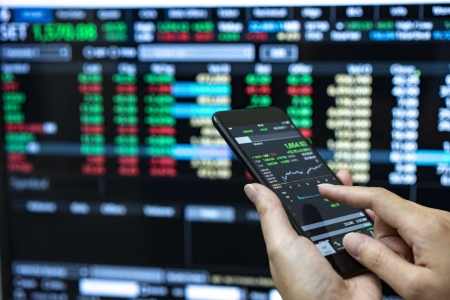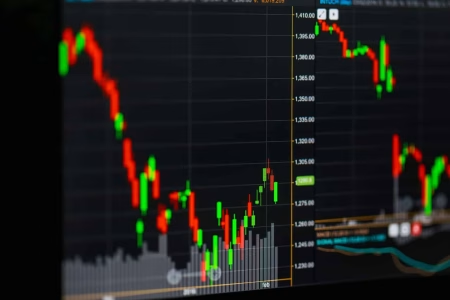Forex Trading Basics 2025
Forex Trading Basics – In the dynamic landscape of financial markets, Forex trading continues to gain traction among retail traders and investors alike. As we progress into 2025, understanding the essentials of Forex trading is more vital than ever. This article aims to provide a comprehensive overview of Forex trading basics, equipping you with the knowledge necessary to embark on your trading journey.

Understanding Forex Trading
Forex, or foreign exchange, is the market where currencies are traded. It operates 24 hours a day, five days a week, making it one of the most accessible trading markets in the world. Traders exchange currencies with the expectation that their value will change over time, allowing them to profit from fluctuations.

Key Characteristics of Forex Trading:
- Liquidity: The Forex market is highly liquid, with trillions of dollars traded daily, ensuring you can enter and exit trades relatively easily.
- Leverage: Forex brokers often offer significant leverage, allowing traders to control larger positions with a relatively small amount of capital. However, leverage also increases risk.
- Market Hours: Unlike traditional stock markets, Forex trading occurs continuously across global financial centers, enabling traders to operate at any hour sensitive to their schedules.

Fundamental Concepts in Forex Trading
Currency Pairs
Trading in Forex always involves two currencies, known as a currency pair. The first currency in the pair is called the base currency, while the second currency is the quote currency. Here are some commonly traded pairs:
- Major pairs: Include pairs with USD, like EUR/USD and GBP/USD.
- Minor pairs: Do not include USD but contain major currencies, like EUR/GBP.
- Exotic pairs: Involve one major currency and one currency from a developing economy, like USD/TRY (Turkey).
Exchange Rates
An exchange rate represents the value of one currency in terms of another. It fluctuates based on various factors, including economic indicators, interest rates, and geopolitical events. Traders monitor exchange rates to inform their trading decisions.
Bid and Ask Price
In Forex trading, you will encounter two prices: the bid price and the ask price. The bid price is the price at which you can sell a currency pair, while the ask price is the price at which you can buy it. The difference between the two is known as the spread, which is a cost of trading.
Getting Started with Forex Trading
1. Choose a Reputable Broker
Choosing the right Forex broker is crucial. Look for brokers regulated by authorities like the Financial Conduct Authority (FCA) or the Commodity Futures Trading Commission (CFTC). They should offer a user-friendly trading platform, competitive spreads, and a variety of currency pairs. For a detailed assessment of various brokers, you can visit Forex Peace Army.
2. Create a Trading Plan
Developing a concrete trading plan is essential for success. This plan should outline your trading goals, risk tolerance, and strategies for entering and exiting trades. A well-structured trading plan can act as a roadmap during uncertain market conditions.
3. Learn Technical and Fundamental Analysis
Two fundamental analysis methodologies help traders make informed decisions:
- Technical Analysis: Traders analyze historical price charts and indicators to predict future price movements. Common technical indicators include moving averages, RSI (Relative Strength Index), and MACD (Moving Average Convergence Divergence).
- Fundamental Analysis: This involves studying economic factors that influence currency values, such as interest rates, inflation, and economic data releases (like GDP growth).
4. Practice with a Demo Account
Before risking real money, it’s wise to practice with a demo account. Most Forex brokers offer demo accounts where you can trade with virtual currency in real market conditions. This allows you to familiarize yourself with the trading platform and test your strategies without financial risk.
Essential Trading Strategies
Several Forex trading strategies can help maximize your opportunities in the market. Here are a few popular ones:
1. Scalping
Scalping is a short-term trading strategy where traders look to make small profits from numerous trades throughout the day. This often requires a good understanding of technical analysis and a keen eye for price movements.
2. Day Trading
Day traders open and close their positions on the same day. They capitalize on short-term market fluctuations while avoiding the risk of overnight positions.
3. Swing Trading
Swing traders hold positions for several days or weeks, aiming to capture larger price movements. They typically use a combination of technical and fundamental analysis to anticipate price trends.
4. Trend Following
The trend-following strategy involves identifying and trading in the direction of a prevailing market trend. Trend traders will either enter long positions during an uptrend or short positions during a downtrend.
Managing Risk in Forex Trading
Risk management is a crucial aspect of trading. Here are some key techniques:
1. Use Stop-Loss Orders
A stop-loss order is an instruction to close a trade at a predetermined price, limiting potential losses. This tool is essential for protecting your capital and minimizing risks.
2. Proper Position Sizing
Deciding how much capital to risk on a single trade is critical. Many traders use the rule of risking no more than 1% of their trading capital on any single trade to protect their account from significant losses.
3. Maintain a Trading Journal
Keeping a trading journal can help you learn from your successes and mistakes. Record your trades, strategies, emotions, and outcomes. This reflective practice can provide insights to refine your approach.
The Future of Forex Trading in 2025
As we delve further into 2025, several trends are likely to shape the Forex trading landscape:
- Technological Advancements: The integration of artificial intelligence (AI) and machine learning algorithms into trading platforms will revolutionize trading strategies and analysis methods.
- Increased Regulation: As retail Forex trading grows, regulators may impose stricter rules to protect traders and maintain market integrity.
- Social Trading: Platforms allowing traders to mimic the strategies of successful traders are gaining popularity, making Forex trading more accessible for beginners.
Conclusion
Forex trading offers an exciting opportunity for individuals looking to enter the financial markets. By understanding the fundamentals, implementing effective strategies, and practicing proper risk management, you can enhance your trading experience in 2025. Whether you’re a novice trader or seeking to refine your skills, mastering Forex trading basics will surely set you on a path to success.
For more insights on Forex trading, economics, and market trends, be sure to explore additional resources at Trading Market Signals.








